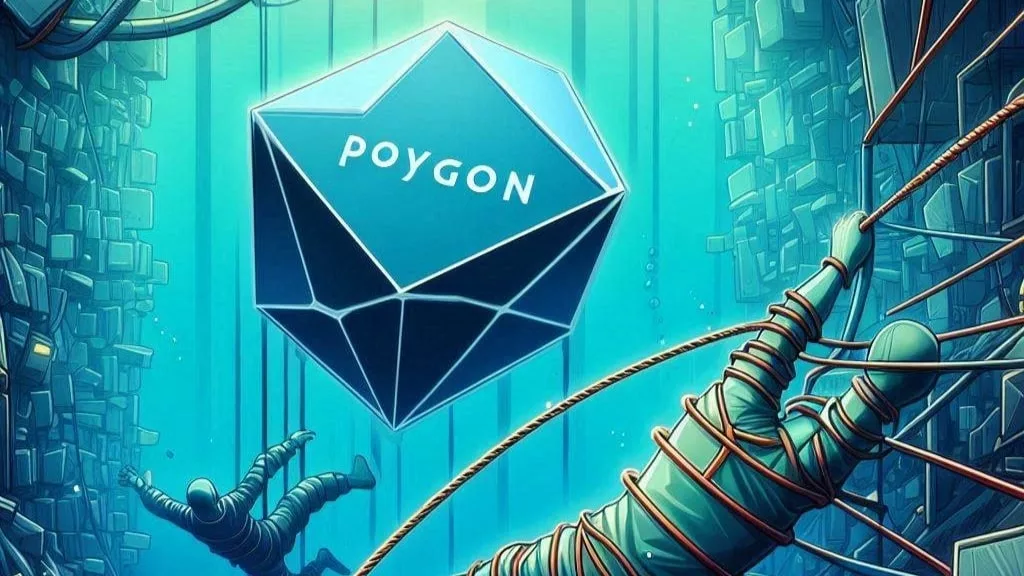
Polygon (MATIC), the Ethereum scaling solution known for its high throughput and low transaction fees, has been mired in a prolonged phase of consolidation. Its price has been oscillating between $0.64 and $0.75 for nearly two months, leaving investors and analysts puzzled about its next move. As market conditions evolve, the altcoin faces mounting challenges, including declining participation and significant sell-offs by large holders, also known as “whales.” This article delves into the factors contributing to MATIC’s stagnation and explores potential future scenarios.
Since early April 2024, MATIC has been confined within a narrow trading range. The cryptocurrency has repeatedly failed to break through the upper resistance level at $0.75, while the support level at $0.64 has held firm. This range-bound trading pattern indicates a lack of strong directional momentum, keeping MATIC in a state of limbo.
The persistence of this trading range suggests that neither bulls nor bears have gained a decisive upper hand. Bulls have been unable to muster enough buying pressure to push the price above resistance, while bears have failed to drive it below support. As a result, MATIC remains stuck, unable to escape the gravitational pull of its consolidation range.
Investor sentiment towards MATIC appears to be waning. Many holders are choosing to sell their positions rather than HODL (hold on for dear life) in the face of stagnant prices. This shift in sentiment is evident from the daily active addresses (DAA) divergence metric, which tracks the relationship between a cryptocurrency’s price and its active user base.
In a healthy market, an increase in daily active addresses alongside a rising price indicates robust growth and strong investor engagement. However, in MATIC’s case, both the price and participation are declining, signaling a lack of confidence among retail investors. This divergence between price and active addresses suggests that investors are losing faith in MATIC’s short-term prospects and are opting to cut their losses.
Adding to the bearish outlook, significant sell-offs by large holders, known as whales, have further pressured MATIC’s price. Addresses holding between 1 million and 10 million MATIC tokens have dumped over 23 million MATIC—equivalent to $17 million—within just four days. This has reduced their total holdings to approximately 913 million MATIC.
Whales wield considerable influence over the price of cryptocurrencies due to the large volumes they control. Their recent selling spree has likely contributed to the downward pressure on MATIC. When whales sell, it often signals a broader bearish sentiment and can trigger additional selling from smaller investors, exacerbating the price decline.
The actions of whales can have a profound impact on the market. When they buy, it can lead to a surge in prices, as their purchases signal confidence and attract more investors. Conversely, when they sell, it can cause panic and lead to a sharp decline in prices. In MATIC’s case, the recent whale sell-off has created a bearish environment that could persist unless there is a significant change in market dynamics.
MATIC’s current predicament cannot be fully understood without considering the broader context of the cryptocurrency market. The market has been experiencing heightened volatility and uncertainty, driven by a mix of macroeconomic factors, regulatory developments, and technological advancements.
The global economic environment plays a crucial role in shaping investor sentiment towards cryptocurrencies. In recent months, inflation concerns, rising interest rates, and geopolitical tensions have created a risk-averse climate among investors. These macroeconomic factors have led to a flight to safety, with many investors opting for less volatile assets.
Cryptocurrencies, being relatively new and highly speculative, are particularly vulnerable to shifts in investor sentiment driven by macroeconomic trends. MATIC, despite its strong fundamentals, has not been immune to these broader market forces. The current consolidation phase reflects a cautious stance among investors, who are waiting for clearer signals before committing significant capital to the market.
Regulatory developments also play a significant role in influencing cryptocurrency prices. Governments and regulatory bodies worldwide are increasingly focusing on cryptocurrencies, seeking to establish frameworks that ensure investor protection, prevent illicit activities, and promote market stability.
In the case of Polygon, any regulatory actions affecting Ethereum, on which Polygon is built, can have a direct impact. Recent regulatory crackdowns on certain crypto activities and increased scrutiny of decentralized finance (DeFi) projects have added to the uncertainty. Investors are closely monitoring these developments, as regulatory clarity could either catalyze a price surge or trigger further consolidation.
The cryptocurrency market is highly competitive, with numerous projects vying for dominance. Polygon faces competition from other layer-2 scaling solutions and alternative blockchain platforms that offer similar benefits. Technological advancements in the broader crypto ecosystem can influence investor sentiment and impact MATIC’s price dynamics.
While Polygon has made significant strides in improving scalability and reducing transaction costs, other projects are also making headway. Investors are weighing the long-term viability of Polygon against emerging technologies and platforms, contributing to the current state of consolidation.
Given the current conditions, several potential scenarios could unfold for MATIC in the coming weeks and months. These scenarios hinge on various factors, including market sentiment, macroeconomic trends, regulatory developments, and technological advancements.
In a bullish scenario, MATIC manages to break through the $0.75 resistance level. This breakout could be triggered by positive news, such as a major partnership announcement, a significant technological upgrade, or a favorable regulatory development. A breakout above $0.75 would likely attract new investors and reinvigorate bullish sentiment, pushing MATIC towards $0.80 and beyond.
For this scenario to materialize, there needs to be a substantial increase in buying pressure and a reversal of the current bearish sentiment. Retail investors and whales would need to regain confidence in MATIC’s long-term prospects, leading to increased trading volumes and positive price action.
In a neutral scenario, MATIC continues to trade within the current range of $0.64 to $0.75. This scenario reflects a market in wait-and-see mode, with investors hesitant to commit significant capital until there is more clarity on the broader market conditions.
Continued consolidation would mean that neither bulls nor bears gain a decisive advantage. MATIC’s price would oscillate within the established range, with occasional tests of support and resistance levels. This scenario could persist until a significant catalyst emerges to break the deadlock.
In a bearish scenario, MATIC fails to hold the $0.64 support level and breaks down to lower price levels. This breakdown could be driven by continued sell-offs from whales, negative regulatory news, or broader market weakness.
A fall below $0.64 would likely trigger further selling pressure, pushing MATIC towards the next support level at $0.60. In this scenario, investor sentiment would likely turn more negative, leading to increased volatility and a more challenging environment for MATIC to recover.
Polygon (MATIC) finds itself at a critical juncture, caught in a phase of consolidation that reflects broader market uncertainties. While the altcoin boasts strong fundamentals and a promising future as a leading Ethereum scaling solution, its immediate prospects are clouded by declining participation, significant whale sell-offs, and macroeconomic headwinds.



Get the latest Crypto & Blockchain News in your inbox.